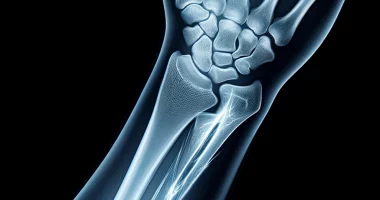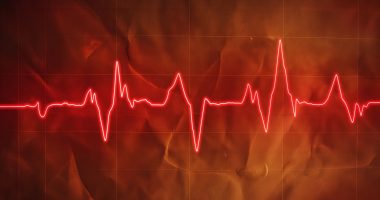Benign lung tumors
Definition
Benign lung tumors are a large number of neoplasms, different in origin, histological structure, localization, and peculiarities of clinical manifestation. They can be asymptomatic or with clinical manifestations: cough, dyspnea, and hemoptysis. They are diagnosed using radiologic methods, bronchoscopy, and thoracoscopy. Treatment is almost always surgical. The scope of intervention depends on clinical and radiological data and varies from tumor enucleation and sparing resections to anatomic resections and pneumonectomy.
General information
Lung tumors are a large group of neoplasms characterized by excessive pathological overgrowth of lung, bronchial and pleural tissues and consisting of qualitatively altered cells with impaired differentiation processes. Benign and malignant lung tumors are distinguished depending on the degree of cell differentiation. There are also metastatic lung tumors (dropouts of tumors, primarily arising in other organs), which, by their type, are always malignant.
Benign lung tumors account for 7-10% of the total number of neoplasms of this localization, developing with equal frequency in women and men. Benign neoplasms are usually registered in young patients under 35 years of age.
Reasons
The causes leading to the development of benign lung tumors are not fully understood. However, it is assumed that this process is promoted by genetic predisposition, gene anomalies (mutations), viruses, exposure to tobacco smoke, and various chemical and radioactive substances polluting soil, water, and atmospheric air. A risk factor for developing benign lung tumors is a bronchopulmonary process with decreased local and general immunity: COPD, bronchial asthma, chronic bronchitis, prolonged and frequent pneumonia, tuberculosis, etc.).
Classification
Benign lung tumors can develop from:
- bronchial epithelial tissue (polyps, adenomas, papillomas, carcinoid, cylindromas);
- neuroectodermal structures (neurinomas (schwannomas), neurofibromas);
- mesodermal tissues (chondromas, fibromas, hemangiomas, leiomyomas, lymphangiomas);
- from germinal tissues (teratoma, hamartoma – congenital lung tumors).
Among benign lung tumors, hamartomas and bronchial adenomas are more common (in 70% of cases).
- Bronchial adenoma is a glandular tumor developing from the epithelium of the bronchial mucosa. It has central exophytic growth in 80-90%, localizing in large bronchi and disrupting bronchial patency. Adenoma growth over time causes atrophy and sometimes ulceration of the bronchial mucosa. Adenomas tend to malignization.
- Hamartoma is a neoplasm of embryonic origin consisting of elements of embryonic tissue (cartilage, fat, connective tissue, glands, thin-walled vessels, smooth muscle fibers, and lymphoid tissue accumulation). Hamartomas are the most frequent peripheral benign lung tumors (60-65%) with localization in the anterior segments. Hamartomas grow either intrapulmonary (in the thickness of lung tissue) or subpleural, superficially. Usually, hamartomas have a rounded shape with a smooth surface, clearly delimited from the surrounding tissues, and have no capsule.
- A papilloma (or fibroepithelioma) is a tumor consisting of connective tissue stroma with multiple papillary outgrowths covered with metaplastic or cubic epithelium on the outside. They develop mainly in large bronchi and grow endobronchial, sometimes obstructing the entire bronchial lumen.
- Lung fibroma is a tumor originating from connective tissue. It accounts for 1 to 7.5% of benign lung tumors. Lung fibromas affect both lungs equally often and can reach gigantic size of half of the thorax. Fibromas can be localized centrally (in large bronchi) and in peripheral areas of the lung.
- Lipoma is a neoplasm consisting of adipose tissue. Lipomas are detected rather rarely in the lungs and are occasional radiologic findings. They are located mainly in the main or lobular bronchi, less often in the periphery. Tumor growth is slow, and malignization is not characteristic.
- Leiomyoma is a rare benign lung tumor that develops from the smooth muscle fibers of blood vessels or bronchial walls. It is more commonly seen in women. Leiomyomas are central and peripheral localization in polyps on the base, pedicle, or multiple nodules.
- Lung vascular tumors (hemangioendothelioma, capillary and cavernous pulmonary hemangiomas, lymphangioma) account for 2.5-3.5% of all benign masses of this localization. Lung vascular tumors can have peripheral or central localization. Localization of vascular tumors in large bronchi causes hemoptysis or pulmonary hemorrhage.
- Dermoid cyst (teratoma) is a dysembryonic tumor-like or cystic neoplasm consisting of different types of tissues (sebaceous masses, hair, teeth, bones, cartilage, sweat glands, etc.). Macroscopically, it appears as a dense tumor or cyst with a clear capsule. It constitutes 1.5-2.5% of benign lung tumors and mostly occurs at a young age.
- Neurogenic lung tumors (neurinomas, neurofibromas, chemodectomas) develop from nervous tissues and account for about 2% of benign lung blastomas. More often, lung tumors of neurogenic origin are located peripherally and can be found in both lungs at once.
Symptoms
Clinical manifestations of benign lung tumors depend on the localization of the neoplasm, its size, direction of growth, hormonal activity, degree of bronchial obstruction, and complications caused. Benign (especially peripheral) lung tumors for a long time may not give any symptoms. In the development of benign lung tumors are distinguished:
- asymptomatic (or preclinical) stage
- early clinical stage
- stage of marked clinical symptomatology due to complications.
Complications
In a complicated course of benign lung tumors may develop pneumofibrosis, atelectasis, abscessed pneumonia, bronchiectasis, pulmonary hemorrhage, organ and vascular compression syndrome, and malignization of neoplasm. In carcinoma, which is a hormonally active lung tumor, 2-4% of patients develop carcinoid syndrome, manifested by periodic attacks of fever, flushes to the upper half of the trunk, bronchospasm, dermatosis, diarrhea, mental disorders due to a sharp increase in blood levels of serotonin and its metabolites.
Diagnosis
At the stage of clinical symptomatology, dulling of percussion sound over the area of atelectasis (abscess, pneumonia), weakening or absence of vocal tremor and respiration, and dry or moist rales are determined. In patients with obturation of the main bronchus, the chest is asymmetric; intercostal spaces are smoothed, and the corresponding half of the chest lags behind during respiratory movements. Necessary instrumental studies:
- Radiography. Often, benign lung tumors are incidental radiological findings detected during fluorography. In radiography of lungs, benign lung tumors are defined as rounded shadows with precise contours of various sizes. With the help of angiopulmonography, vascular lung tumors are diagnosed.
- Computed tomography allows a detailed assessment of the structure of benign lung tumors, determining not only dense inclusions but also the presence of adipose tissue characteristic of lipomas, fluid—in tumors of vascular origin, and dermoid cysts.
- Bronchial endoscopy. Bronchoscopy is used to diagnose lung tumors, allowing not only the examination of the neoplasm but also the performance of a biopsy (in central tumors) and the obtaining of material for cytological examination.
- Biopsy. In peripheral lung tumors, transthoracic aspiration or lung biopsy is performed under X-ray or ultrasound control. If diagnostic data from special methods of investigation are lacking, thoracoscopy or thoracotomy with biopsy is resorted to.
Treatment
All benign lung tumors, regardless of the risk of their malignization, are subject to surgical removal (in the absence of contraindications to surgical treatment). Operations are performed by thoracic surgeons. The earlier the lung tumor is diagnosed and its removal is performed, the less the volume and trauma of surgical intervention, and the less the risk of complications and the development of irreversible processes in the lungs, including tumor malignization and metastasis. The following types of surgical interventions are used:
- Bronchial resection. Central lung tumors are usually removed by sparing (no lung tissue) bronchial resection. Tumors on a narrow base are removed by definitive resection of the bronchus wall with subsequent suturing of the defect or bronchotomy. Lung tumors on a wide base are removed using circular bronchus resection and interbronchialanastomosis.
- Lung resection. In case of already developed complications in the lung (bronchiectasis, abscesses, fibrosis), resort to removing one or two lung lobes (lobectomy or bilobectomy). If irreversible changes develop in the whole lung, it is removed – pneumonectomy. Peripheral lung tumors located in the lung tissue, removed by enucleation (excision), segmental or marginal resection of the lung, with large tumor size or complicated course resort to lobectomy.
Benign lung tumors are usually treated surgically by thoracoscopy or thoracotomy. Centrally located benign lung tumors growing on a thin pedicle can be removed endoscopically.
All these treatment options are available in more than 380 hospitals worldwide (https://doctor.global/results/diseases/benign-lung-tumor). For example, Lobectomy can be done in 22 clinics across Turkey for an approximate price of $10.4 K (https://doctor.global/results/asia/turkey/all-cities/all-specializations/procedures/lobectomy).
Prognosis and prevention
In case of timely treatment and diagnostic measures, the long-term results are favorable. Recurrences at radical removal of benign lung tumors are rarely observed. The prognosis is less favorable in lung carcinoids. Considering the morphological structure of carcinoids, the five-year survival rate at a highly differentiated type of carcinoid is 100%, at moderately differentiated type -90%, and at a low-differentiated type – 37,9%. Specific prophylaxis has not been developed. Timely treatment of infectious-inflammatory lung diseases, exclusion of smoking, and contact with harmful substances and pollutants allow for minimizing the risks of neoplasm.



